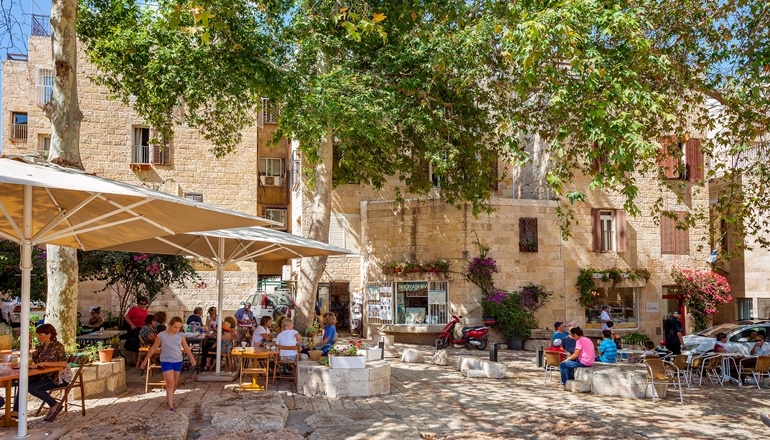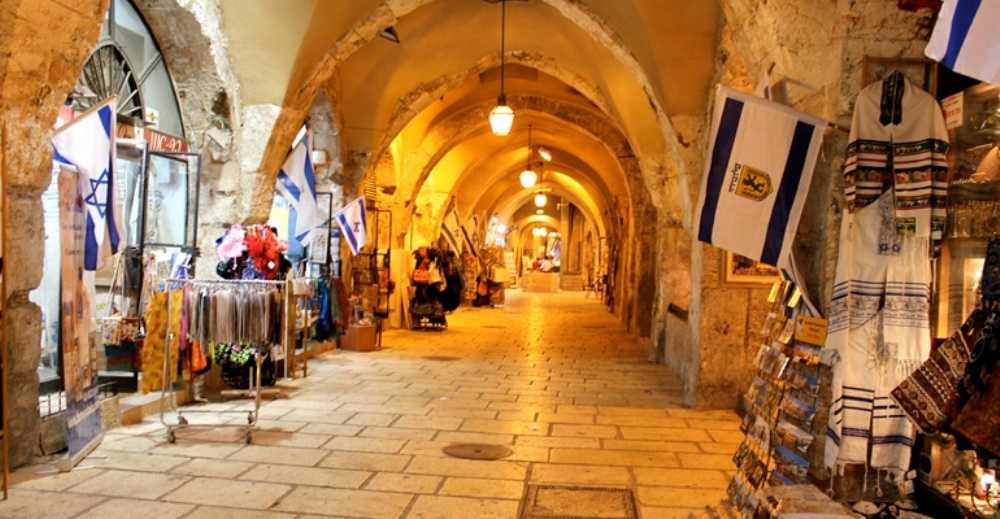Thousands of years ago, the Jewish people tied their destiny to Jerusalem, but they were not always able to live there. During the First Temple era, the boundaries of Jerusalem reached up to the hill where the Jewish Quarter is located today, and the “Broad Wall”, dating back to the era of the First Temple, was discovered amongst its buildings. During the Second Temple era Jerusalem prospered, and sites that have been discovered within the Jewish Quarter bear witness to the luxurious lives lived within its boundaries. This can be seen, among others, in “the Herodian Suburb” and “the burnt house”.
After the destruction of the Second Temple, the Jews were expelled from Jerusalem during the Roman and the Byzantine times, and returned to the city only after the Muslim occupation in the 7th century. The occupation of Jerusalem by the crusaders lead to the end of this community. The Jewish and Muslim residents of the city were either expelled from it or cruelly massacred. The Jewish settlement was renewed only after Nahmanides arrived in Jerusalem in 1267, during the times of the Mamelukes. During these times, the Jews lived in Mount Zion. In the 15th Century the Jews were expelled from Mount Zion due to disputes with the Christians and Muslims regarding control over the Tomb of King David, and later returned to the present location of the Jewish Quarter.
During the 400 years of Ottoman rule in Jerusalem, a heterogeneous Jewish community lived in the Jewish Quarter within the walls of the old city. Until the mid-19th century, the Jewish community mainly consisted of Sephardi Jews, descendants of the exiles from Spain. In the beginning of the 18th century, Ashkenazi Jews started settling in the old city in significant numbers. They were for the most part individuals who trickled in either alone, or in groups of Hassidim and scholars. An organized Ashkenazi community in Jerusalem did not last long. In 1721, the Ashkenazi community in Jerusalem ceased to exist, and renewed itself only 90 years later.
During the 19th century, the Jewish population of Jerusalem greatly expanded, and towards the end of the century they started moving out of the old city. This demographic period ended in 1948, when the Jewish Quarter fell into the hands of the Jordanians during the War of Independence. After the 6-Day War, when Jerusalem was united in 1967, various archeological excavations were initiated in the quarter. Fascinating findings were discovered in these excavations, evidence for the existence of Jewish communities throughout history. Later on the houses of the Jewish quarter were renovated and Jews returned to live there. Today there are many touristic sites within the boundaries of the Jewish Quarter: the synagogues, archeological sites, museums, galleries and shops. In the quarter’s alleys there are many charity institutions, prayer houses and remnants from the past that convey the vision of many Jews who left their homes and emigrated to Jerusalem with one prayer in their hearts: “If I forget you, Jerusalem…“









